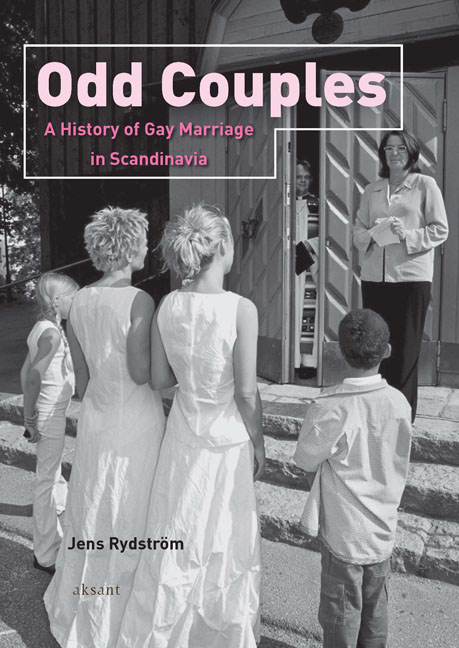Book contents
- Frontmatter
- Contents
- Preface
- Introduction
- Chapter One The Road to Registered Partnership
- Chapter Two Is Marriage what we want?
- Chapter Three Gay Marriage in Mainstream Politics
- Chapter Four Implementation
- Chapter Five Gender and Marriage Statistics
- Chapter Six The Next Step
- Summary and Conclusions
- Notes
- Appendix: Political Parties and Gay and Lesbian Rights Groups in Scandinavia
- References
- Index
Chapter One - The Road to Registered Partnership
Published online by Cambridge University Press: 20 January 2021
- Frontmatter
- Contents
- Preface
- Introduction
- Chapter One The Road to Registered Partnership
- Chapter Two Is Marriage what we want?
- Chapter Three Gay Marriage in Mainstream Politics
- Chapter Four Implementation
- Chapter Five Gender and Marriage Statistics
- Chapter Six The Next Step
- Summary and Conclusions
- Notes
- Appendix: Political Parties and Gay and Lesbian Rights Groups in Scandinavia
- References
- Index
Summary
The laws on registered partnership were revolutionary in that it was the first time the state recognised individual same-sex couples as legitimate. That is not to say that they lacked legitimacy in a number of other respects before the laws were adopted. Long-term relationships between persons of the same sex were seen and acknowledged as part of social life long before that, and even during periods of pronounced anti-homosexual campaigns, such couples could live and thrive among friends. In 1963, two lesbians who had a central position in Stockholm's lesbian and gay subculture arranged a wedding ceremony. Vivi Astroy, better known as Jerry, and her wife Märta hosted the popular Jerry's Ladies Clubs (Jerrys damklubbar) in the 1960s and many lesbians have testified how important that was for them when they were young. When Jerry and Märta decided to get married, they invited some fifty people to Druvan, an old and wellknown restaurant with large banquet halls. Sven, who was a guest, has described how everything was like a “real wedding.” Jerry wore a tailcoat and Märta a wedding gown. There were bridesmaids and an altar and candles. A gay man, who had some authority as a priest or a deacon, officiated. Sven remembered it as a very nice occasion, with speeches and gifts and dancing. “But I guess many frowned at it and thought that it was extravagant. It was rather daring for the time.” There were others who arranged weddings like that back then, Sven said, also men, but mostly on a smaller scale and among an intimate circle of friends. “They would promise eternal fidelity in front of us witnesses and exchange rings, and then we had dinner.”
Sven's story shows that there were gay weddings well before the authorities began pondering whether to recognise them or not. In the circle of friends and in the midst of supportive networks, same-sex couples sought recognition from those who were important to them, and did not yet expect the state to grant them any rights. It also demonstrates how lesbian and gay networks had begun to interlock in the post-war period. Before the war, there were very little contacts between lesbians and gay men in the Scandinavian subcultures.
- Type
- Chapter
- Information
- Odd CouplesA History of Gay Marriage in Scandinavia, pp. 39 - 68Publisher: Amsterdam University PressPrint publication year: 2012



